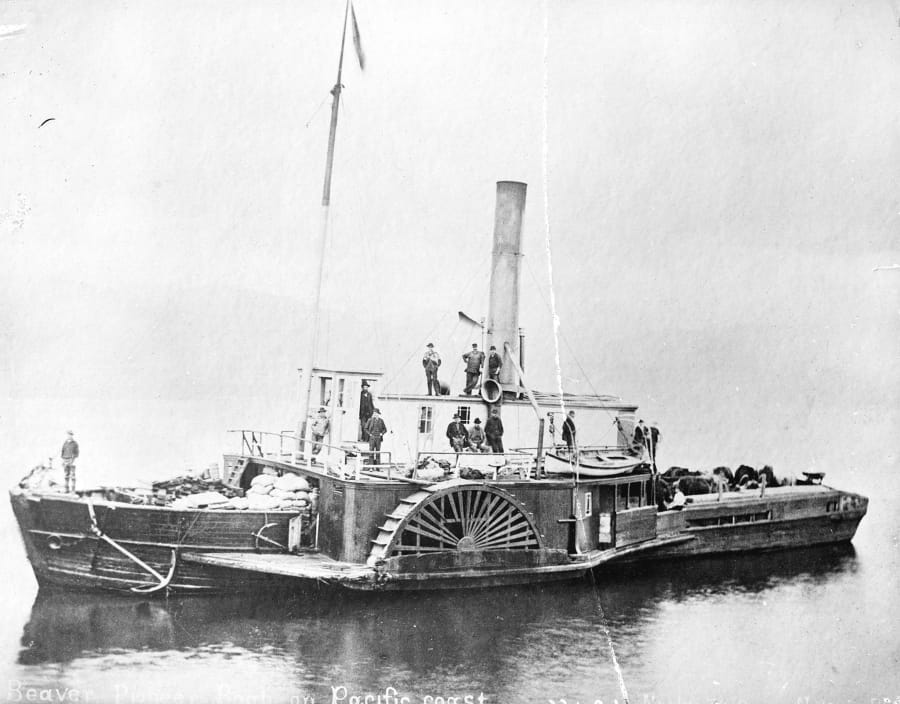A letter written here in 1842 just sold for $930.
The document from Dr. John McLoughlin does not offer much insight into the history that was part of Fort Vancouver’s transition from British fur-trading bastion to a U.S. Army outpost.
It’s literally an example of nuts-and-bolts business correspondence, detailing freight that had been damaged on the way here from England. It talks about rusted pins, nuts and steel springs, plus wire, cement and other industrial-grade materials damaged in transit.
While it isn’t exactly riveting subject matter (unless you appreciate a good rivet), the 176-year-old letter actually reflects one of the 19th century’s biggest technological advances. Those materials had been shipped from England to repair and maintain the Beaver, a steamship operated by the Hudson’s Bay Company.
It was the first steamship in Pacific waters, and its first steam-powered voyage was launched from Fort Vancouver. The Beaver wasn’t built here, though. The 101-foot-long vessel was built in England in 1835, and 150,000 people reportedly cheered its launching on the Thames River. Then a crew of 13 men delivered the Beaver, which was built with two masts, under sail power to the Pacific Northwest.
Company officials didn’t want to risk using the steam-powered technology on the 7½-month voyage, said Bob Cromwell, chief of interpretation at Fort Vancouver National Historic Site.
And, there was no network of refueling stations along the way to keep the steam up. So, the side paddlewheels were installed after the Beaver docked at Fort Vancouver in April 1836, Cromwell said.
Once the Beaver made the switch to steam, it transported furs and supplies to Hudson’s Bay posts in the Northwest. According to accounts, it took two days for a dozen wood-cutters to cut enough fuel to run the engines for one day.
After six years on the job, the Beaver needed some repairs, which is what that 1842 letter was all about. A chartered English ship, Valleyfield, delivered the materials — including a new boiler from Boulton Watt & Co. — to Fort Nisqually, a Hudson’s Bay site in Puget Sound near present-day Tacoma.
The letter detailing the damaged goods was sold at a March 17 auction held by All Nations Stamp and Coin, in Vancouver, B.C.
A private collector paid $1,200 Canadian, equivalent to about $930 U.S., for the letter, outbidding six other hopefuls. Identity of the new owner was not disclosed, but the winning bidder is a Washington resident, business owner Brian Grant Duff said.
As the letter indicated, McLoughlin — who oversaw a huge swath of the continent from Fort Vancouver — had reason to be unhappy. In those days, Cromwell explained, sending a shopping list to the home office in London and then getting your order delivered could be a two- or three-year process.
McLoughlin’s name at the bottom of the letter doesn’t match known examples of his signature, Grant Duff said, so the letter would have been penned by a secretary who then signed it on the chief factor’s behalf.
As it turned out, any shipping delay did not spell the end of the steamer. The Beaver proved to be a durable workhorse, long after the Hudson’s Bay Company transferred its operations to British Columbia around 1860. The Beaver plugged along until 1888 when it ran onto rocks in Vancouver (B.C.) Harbor.
In October 2015, All Nations Stamp and Coin auctioned another Hudson’s Bay document, written at Fort Vancouver in March 1842. The one-page list of all the skins and pelts harvested in 1841 in the Columbia District — which stretched from California to Alaska —sold for $7,700 in Canadian currency.




